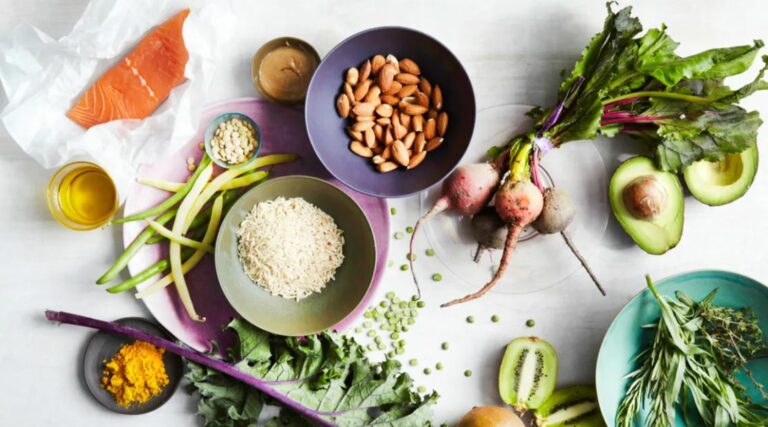Survival Food: What to Look for in Foods for Your Emergency Stockpile

Food is one of the basic necessities. It’s right up there at the top of the list with water, shelter, and air. Though some sources say humans can survive for up to four weeks without food, other authorities are quick to point out that it’s not an easy feat. While it may be considered surviving, it won’t be the most comfortable or enjoyable few weeks you’ve ever experienced. Surviving without nutrients, calories, and fats quickly takes a toll, leaving you weak, tired, and unable to think clearly.
Stockpiling Sustenance for Survival
Because of that, having plenty of food on hand for emergencies is essential. It’ll keep you alive and give you the strength you need to weather a bad situation. Of course, not everything that’s edible qualifies as Survival Food. Understanding what to look for when building your cache of emergency foods will help you not just survive but thrive in the face of adversity. Keep the following points in mind when looking for survival foods to ensure you choose the best options for your stockpile.
Long Shelf Life
One of the most important traits to look for in emergency food options is a long shelf life. Though fresh fruits, vegetables, meats, and other sources of nutrition are ideal, they may not be readily available in an emergency. Even if they are, you may not have the means to keep them fresh for very long. Choosing foods that can last a long time without refrigeration is essential. That’s the case whether you’re facing a global disaster like nothing humanity has ever seen before or simply surviving being lost in the woods for a few days.
Obviously, meats, eggs, and dairy products don’t offer those traits. They need to be refrigerated to stay fresh. Otherwise, bacteria and parasites start growing in them, making them dangerous to eat. Eating them in spite of the dangers would certainly be counterintuitive to survival. Fresh fruits and vegetables don’t necessarily need to be refrigerated, but they don’t last very long in their original form. Canned foods last longer, but even those go bad. They can last up to five years at best. Many of them only last 15 months to two years.
Foods that are designed for survival situations offer a far longer shelf life. They’re generally dehydrated or freeze-dried, which takes the moisture out of them. From there, they’re securely packaged to safeguard the foods, and you, against germs, mold, and other hazards. These foods can last 25 years or more under the right conditions, so you can buy them in advance of an emergency and have them on hand for when you need them. You won’t have to worry about them spoiling before you have a chance to take advantage of them.
Lightweight and Portable
Survival foods should be lightweight and easy to take with you if the need arises as well. Again, canned foods aren’t the best option here. Vienna sausages, Spam, and baked beans may be fine for a weekend camping trip. It wouldn’t be practical to take them along if you’re running from a threat and trying to find safer ground, though. Even carrying around enough canned foods to keep you going for a few days would be difficult because they’re heavy and bulky.
Most of the weight and bulk of those foods come from their packaging and the water they contain. Once you eliminate those, you have a smaller, lighter, more portable supply of food. Dehydrated and freeze-dried foods offer just that. As mentioned, the water is removed from these foods during processing. That leaves behind the substance of the foods without all the added weight. Their packaging is far lighter than cans and bottles, too, so they’re easy to carry along on a trip.
You can take along entire pre-packaged variety buckets of meals for long-term survival or only a few snacks to fill short-term needs. Even the former would only weigh about 11 pounds or so per unit. That’s entirely manageable even on the go.
Saving Space
Along those same lines, you may want to consider the amount of space a supply of emergency foods takes up. Cans, jars, and bottles can easily fill up entire shelves, but again, much of that space consists of the packaging itself. When you really think about it, you’re losing quite a bit of square footage to metal, glass, and the fluids surrounding the foods with those options. It’s just not necessary.
Whether you’re filling up an expansive pantry in a bunker or thinking about how much extra room you have in a backpack, space is a factor to keep in mind. With pre-packaged survival foods, you can pack enough food for three weeks or so into about a square foot of space. That much food packaged in cans and jars would require several square feet. With freeze-dried and dehydrated emergency foods, you may actually have far more food than you think rather than vice versa.
Simple Preparation
Another factor to think about is how simple or difficult your emergency foods are to prepare. You may not have a lot of extra time on your hands to prepare meals in an emergency. Resources, like extra ingredients and a heat source, may be in short supply as well. Besides those aspects, you don’t want to expend any more energy than necessary on things like food preparation. That needs to be saved for other matters, like keeping moving, finding shelter, and fending off threats.
With many foods that are specifically designed for survival, preparation couldn’t be simpler. Everything you need for a meal is already combined in the packages. All you have to do is heat water, open the food packages, and add the hot water to them. Within minutes, your meals will be ready to eat. You could have a tasty, nutritious, well-rounded meal for your family with about as much effort as making instant Ramen. They’re quick, simple meals that help to meet your nutritional and caloric requirements to keep you up and running.
Nutritional Value
That brings us to one of the most important considerations for emergency foods: nutritional value. People need certain types and amounts of nutrients each day to remain healthy. Those include proteins, carbohydrates, vitamins, minerals, and fats. Since those nutrients come from the foods we eat, we need to have well-balanced meals to ensure we get everything we need. Not all foods offer good nutritional value, so it’s best to choose wisely when selecting emergency foods.
When reading labels, keep macronutrients in mind. Those are the nutrients the body needs in large amounts. This category includes protein and carbohydrates. Those nutrients give you energy, immunity, muscle regeneration, and an array of other benefits. They help keep both your mind and body going strong. Choose foods that are high in these nutrients when possible.
Look for micronutrients as well. Those include vitamins and minerals, which the body requires in smaller amounts. They help macronutrients to do their jobs properly. Your survival foods should have ample micronutrients to further fuel your body. That being said, the macronutrients are the major players, especially in a survival situation, and many foods that provide those also have vitamins and minerals.
One of the advantages of freeze-dried and dehydrated foods is their high nutritional value. Their preservation processes may take out water, weight, and bulk, but they don’t destroy nutrients. That means they can help provide everything you need to stay healthy just like fresh foods. They also offer caloric density, which essentially means they give you more of what you need with less food. They pack more of a healthy punch than other options.
Keep Water Requirements in Mind
Water is one of life’s basic essentials as well. In emergency situations, clean drinking water may be in short supply. As such, it’s important to keep in mind the amounts of water you’ll need for not only staying clean and hydrated but also preparing your emergency meal kits. As a general rule, you’ll need about a gallon of water per day for each person. Be sure to factor in the amount needed for food preparation, which typically ranges from half a cup to one cup per meal on average.
If you’re lost in the wilderness or on the move, you may not be able to carry enough water for everyone. To overcome that problem, consider having a portable water filter on hand or a personal filter straw for each person. Be sure to have a few extra filter cartridges with you as well in case the ones you’re using become saturated.
Keeping Your Body Fueled in an Emergency
Food is essential. Though the human body can technically survive for a few weeks without food, that doesn’t mean you should test those limits. With so many freeze-dried and dehydrated survival foods now available, there’s no reason why you should have to. Remember the points mentioned here to help you find emergency foods that are sure to help meet your family’s nutritional needs in an emergency. They’ll help you thrive in the face of hardship no matter what type of unplanned predicament you’re facing.





